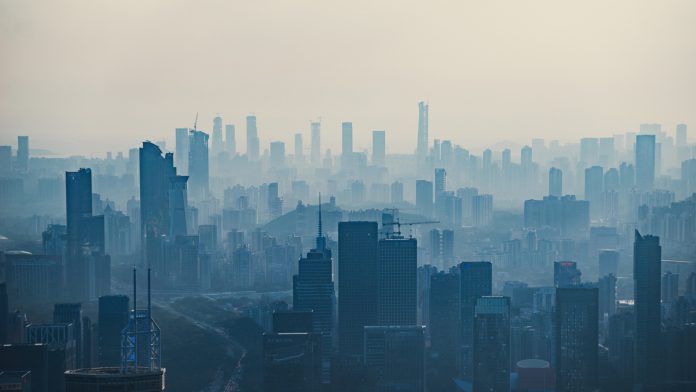CERN’S Cosmics Leaving Outdoor Droplets (CLOUD) experiment has revealed a new mechanism that drives winter urban smog episodes.
Published in Nature, the results of this research could help policy makers reduce urban smog, which ranks fifth in the risk factors for mortality worldwide.
What is the CLOUD experiment?
The CLOUD experiment at CERN uses a cloud chamber capable of mimicking all the diverse aspects of Earth’s atmosphere, with precise control of the conditions and extremely low contaminants.
The data gathered by sampling instruments attached allows researchers to gain a comprehensive understanding of the formation of aerosol particles and their effect on clouds and climate. Ions from cosmic rays can also influence aerosol formation, and their contributions are studied by varying the intensity of an ion beam from CERN’s Proton Synchrotron, which passes through the chamber.
In their new study, CLOUD scientists simulated urban smog in the chamber and investigated the role of ammonia and nitric acid at atmospheric concentrations. Global emissions of ammonia are dominated by farming. In cities, however, the presence of both ammonia and nitric acid – which derives from nitrogen oxides (NOx) – is largely due to vehicles.
Understanding urban smog episodes
Winter urban smog episodes occur when new particles form in polluted air trapped below a temperature inversion. The warm air above the inversion inhibits convection, causing pollution to build up near the ground.
How additional aerosol particles form and grow in highly polluted air has been a mystery until now, because they should be rapidly lost through scavenging by pre-existing aerosols. A new result from CLOUD could explain the mystery. “Ammonia and nitric acid were previously thought to play a passive role in particle formation, simply exchanging with ammonium nitrate in the particles”, says Jasper Kirkby, head of the CLOUD experiment.
The new CLOUD study shows that small inhomogeneities in the concentrations of ammonia and nitric acid can lead to particle growth rates up to more than 100 times faster than previously seen.
These ultrafast growth rates are sufficient to rapidly transform the newly formed particles to larger size, where they are less prone to being lost through scavenging by pre-existing particles. The result is a dense smog episode with a high number of particles.









